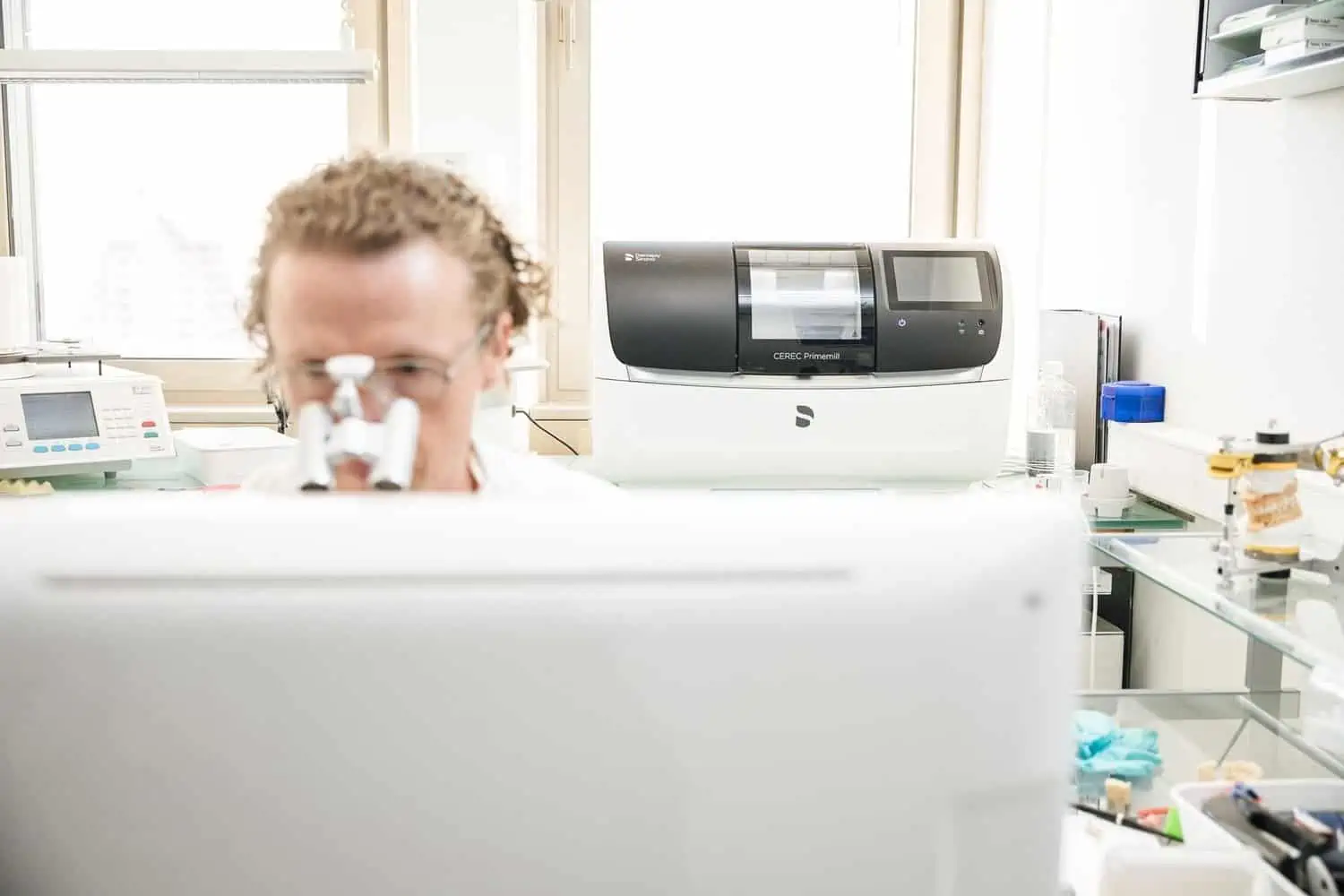Home » Wurzelbehandlung
Wurzelbehandlung (Endodontie)
So erhalten wir Ihre natürliche Zahnsubstanz – trotz Entzündung
The specialist area of endodontics is all about curing diseases in the interior of the tooth. The main concern here is to save the tooth at all costs. For nothing is as valuable as the natural tooth.
Mit Fingerspitzengefühl
und Know-how
The anatomy of the roots of the tooth is very complex, and they can therefore only be treated using special instruments. Individual features of the root canal system can be examined better using an operating microscope.
Have you already undergone a root treatment? Then you will know what is involved: it requires quiet and calm as well as precision and empathy from the dentist carrying out the treatment.
Modern endodontics offer excellent options for preserving teeth even if the dental nerve is diseased or dead.
When is root treatment required?
Inflammations, which are usually caused by carious bacteria or accidents, permanently damage the pulp cavity. The result: terrible toothache. Swift root canal treatment is then required.

Moderne Dental-Mikroskopie
Modern endodontics offer excellent options for preserving teeth even if the dental nerve is diseased or dead.
We use the most up-to-date dental microscopy for our examination.
Inflammatory reactions in the jawbone, which can be traced back to the pulp cavity, can be avoided with root treatment or they can be healed.
The good news
With modern technology, which has seen rapid further development in the last few years, teeth can be preserved for several years with timely and thorough treatment. And this is true for more than 90 per cent of cases. What happens when the tooth is too fragile, too loose or permanently infected? It then has to be extracted as a last resort. But don’t worry: the gap that is left can be closed with a bridge, an implant or a removable tooth prosthesis.
The course of the pain and medical history
In some cases, it may not be so simple for the patient to identify the exact site of the pain. Pain often radiates out, so that the actual focal point cannot be clearly recognised. It is possible it may not be to do with the tooth at all. Therefore, precise documentation of the course of the pain and the medical history of the patient are extremely important for the diagnosis.
Teeth that have already been root-treated with new problems arising do not automatically have to be extracted. They can be treated again with a very high success rate.
Angst vor Schmerzen bei einer Wurzelbehandlung? Erfahren Sie wie Ihnen unsere Narkosemöglichkeiten helfen können.
Die Wurzelbehandlung
auf einen Blick
The anatomy of the roots of the tooth is very complex, and they can therefore only be treated using special instruments. Individual features of the root canal system can be examined better using an operating microscope.
Have you already undergone a root treatment? Then you will know what is involved: it requires quiet and calm as well as precision and empathy from the dentist carrying out the treatment.
Our services
- Medical history
- Clinical examination and diagnosis using 3D X-ray if required
- Treatment of the root canal with intensive and comprehensive antiseptic measures and local anaesthetic
- Filling / preparation for tooth replacement
Unsere Extraleitsungen
- Treatment under the microscope
- Electrical length measurement of the root canal
- Acoustically-assisted antiseptic treatment of the whole canal system
- Three-dimensional root canal filling without cavities
- Digital volume tomography in high-resolution mode (3D X-ray)
- Review of teeth already root-filled
Sie haben Fragen rund um das Thema Wurzelbehandlung?
You will find answers to the most frequently asked questions here.
Yes. Both terms refer to the treatment of inflamed dental nerves in the root canal.
Obviously, our specialists only carry out root treatment under anaesthesia, so that there is no pain as far as possible.
To treat dental roots successfully takes a great deal of experience, the greatest precision, extensive specialist knowledge and plenty of empathy. For the anatomy of dental roots is extremely complex. Therefore, they can only be seen, cleaned, measured and sealed with special instruments. Lateral canals are also often difficult to see and there is the danger of breaching a canal during cleaning.
